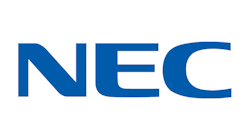NEC Display Solutions Shows the Way to Smarter Connected Passenger Journeys
NEC Display Solutions Europe will exhibit its advanced display solutions for airports at Passenger Terminal EXPO (PTE) taking place in Stockholm from March 20-22.
Airports exist for the sole purpose of helping passengers to get to where they are going. The journey from drop off to boarding is one of anxiety for most passengers and today the omnipresent function of way-finding is generally left to disparate systems and static visuals. These neither reflect the dynamic and changing nature of the airport environment or the passengers within it. Until today.
The NEC stand No. 220 at PTE 2018 will showcase NEC Direct View LED, a technology that can be used to replace static way-finding signs with smart digital signs. Direct View LED is the only technology that provides the ultra-high brightness, long-life and flexible size that airport way-finding signs demand.
Ideal for way-finding at drop-off, immigration, check-in, departure halls, piers and gates, visitors to the NEC booth will learn how smart signs can be used to overcome language barriers, emergency situations, change and moves, making the airport experience more pleasant, informative, and easily-navigable for passengers in real-time.
By seamlessly integrating smart signs into architectural surfaces, airport architects and designers can now be more creative in how the building itself can be used as part of the way-finding strategy that will ultimately transform the passenger experience.
NEC will showcase:
- Next-generation UHD Flight Information Display System (FIDS) displays, featuring open pluggable specification (OPS) and Raspberry Pi simplified DDC installation and integration
- NEC Direct View LED Smart Way-Finding Signs
- Behind-glass transparent displays for gate signage
- Real-time video surveillance using high performance facial recognition
- NEC Airport Operational Control Centre solution “Hiperwall”
Richard Wilks, global aviation business development manager at NEC Display Solutions, commented, “With pressure on airports to deliver higher passenger throughput without terminal expansion, the need to inform and instruct passengers along their journey is fundamental to improved operational efficiency and higher passenger satisfaction. The reliance on a traditionally wholly static way-finding sign strategy is limiting airports’ ability to be agile, and the situation is only going to get worse.”
“That’s why NEC is launching smart way-finding signs at PTE this year. By using operational data to change way-finding content in real-time on the signs, airports can re-direct and re-inform passengers in ways that they have never been able to do before. This could be in the form of emergency messaging such as last call or missing child, or simply to react to a build-up of passenger numbers in an area or a change of gate or queue lane in immigration. Smart signs can also overcome language barriers, especially if connected to known flight departures or arrivals from specific countries.”
“Our stand at Passenger Terminal EXPO will immerse visitors in tomorrow’s journey through the airport and show airport operators how they utilise this new technology to drive passenger satisfaction and increased non-aeronautical revenues,” added Wilks.



